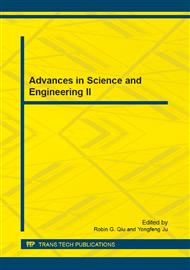p.21
p.26
p.30
p.37
p.43
p.50
p.56
p.63
p.70
A High-Speed Railway Data Placement Strategy Based on Cloud Computing
Abstract:
The application of high-speed railway data, which is an important component of China's transportation science data sharing, has embodied the typical characteristics of data-intensive computing. A reasonable and effective data placement strategy is needed to deploy and execute data-intensive applications in the cloud computing environment. Study results of current data placement approaches have been analyzed and compared in this paper. Combining the semi-definite programming algorithm with the dynamic interval mapping algorithm, a hierarchical structure data placement strategy is proposed. The semi-definite programming algorithm is suitable for the placement of files with various replications, ensuring that different replications of a file are placed on different storage devices. And the dynamic interval mapping algorithm could guarantee better self-adaptability of the data storage system. It has been proved both by theoretical analysis and experiment demonstration that a hierarchical data placement strategy could guarantee the self-adaptability, data reliability and high-speed data access for large-scale networks.
Info:
Periodical:
Pages:
43-49
Citation:
Online since:
October 2011
Authors:
Price:
Сopyright:
© 2012 Trans Tech Publications Ltd. All Rights Reserved
Share:
Citation:


